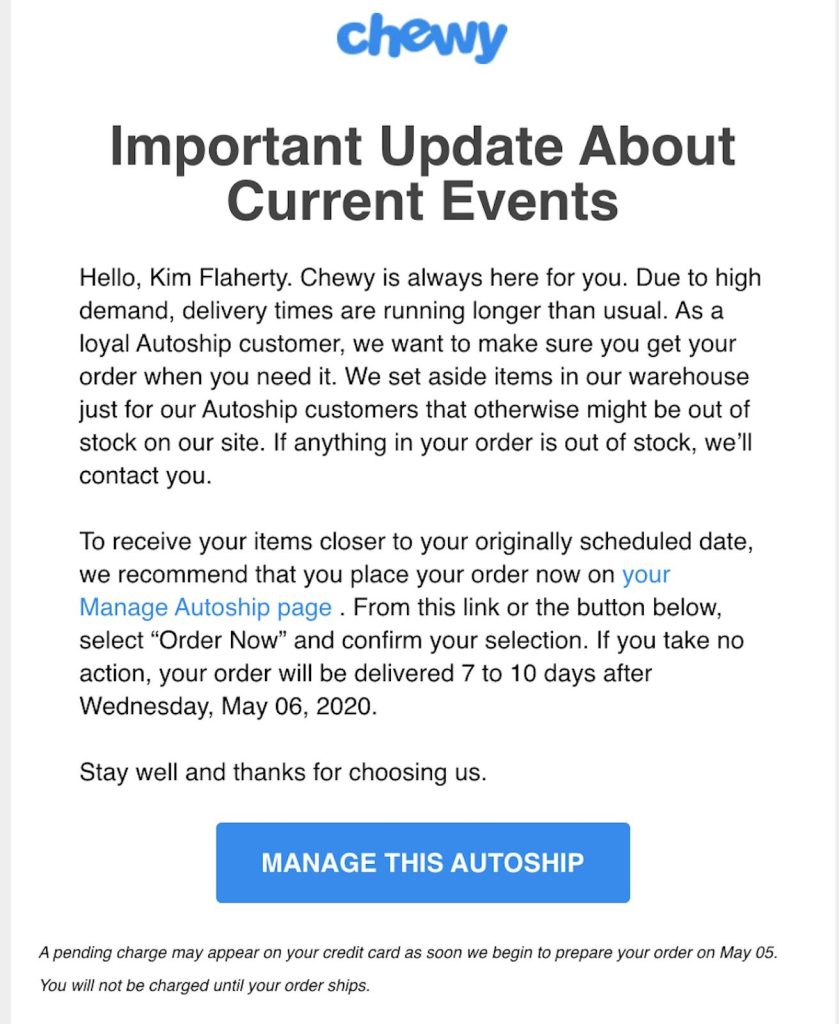Over the last two years, the onset of the coronavirus pandemic threw a flurry of curveballs at every single business out there. This, more than ever, wisened them to the importance of setting up a robust crisis communication protocol in place.
Now, the next plan of action was to figure out the right channel for the same. One, that would allow them to reach a large audience, send personalized messages, stay on top of their customers’ pulses, and overall, make the most out of their investment. Only one could tick all these boxes – targeted email marketing.
💡 Read Crisis Management 101: How to Save Your Business When a Crisis Strikes
Whenever a crisis hits your business, it doesn’t just lay waste on your operations, but also significantly disrupts the buyer journeys of your customers too. If you want to have any realistic shot at minimizing damage, targeted email marketing is the way forward.
In this article, you will learn more about its benfits and what to pay your attention to.

Benefits of Targeted Email Marketing
Targeted messages are always effective, irrespective of the situation. On normal days they help you strike a connection with your subscribers, ensuring that they notice your email amidst the thousands that flood their inboxes on a daily basis. During times of crisis, they help your customers obtain complete clarity about the situation in question. To make sure that your targeted emails will be received, you can additionally use the email finder tool, which will find the most relevant emails for your campaign.
Read Email Marketing Mastery: A 2023 Guide for Agencies

Listed below are some merits of targeted email marketing.
- Your messages will always be relevant for your audience. As mentioned above, in this age of email overload, a recipient will never bother to interact with your message unless it directly addresses their needs and pain points. However, in order to send targeted messages, you first need to familiarize yourself with the unique needs and requirements of every single one of your subscribers. And to do that, you need to segment your list effectively- divide your contacts into different sections based on several parameters like age, gender, occupation, interests, buying patterns, position in sales funnel, and the like. This way, you’ll be able to get the tone of your crisis communication spot on for each segment.
- Your ROI will improve significantly. By virtue of their relevance, targeted emails ramp up your engagement levels by leaps and bounds. Subsequently, this lays the path for greater conversions, and, ultimately, increased revenue.
- Targeted emails open doors to strengthened customer relationships. It tells your customers that you care about their association with your brand. There’s nothing quite like a targeted and transparent crisis email to convince subscribers of your integrity. This goes a long way towards improving your customer retention and loyalty rates as well.
Read 4 Ways To Improve Your Crisis Communications Strategy
Things to Keep in Mind While Drafting a Crisis Email
Besides giving clarity to your customers, a crisis email also dispels apprehensions surrounding your brand reputation. Hence, it is extremely crucial to make sure it hits the right notes. The following tips will help you with that.
Maintain an empathetic tone
As we said earlier, a crisis befalling your business is as stressful for you as it is for your customers. Their minds are highly likely rented with feelings of uncertainty and anxiety. So, how do you best tackle that?
By composing your crisis emails in an uplifting and reassuring language. Be transparent, of course, but in the process avoid coming across as blunt. Outline the silver linings, and explain the steps you are putting in to get the situation under control.
Read Three Crisis Communications Examples By Real Brands You Can Learn From
Be mindful of your copy
The soul of your crisis email lies in its copy. Take the following pointers into account while writing it.
- Get straight to the point. Including unnecessary preamble while addressing a sensitive situation will only attract the ire of your customers.
- Avoid using technical language. The goal of your crisis email is to make your customers easily understand the problem. Including jargon will only add to their confusion and make things worse for both of you.
- Do not write your email in all caps. They can invite unsolicited panic.
- If you are sharing any set of instructions with your subscribers, arrange them in the form of bullet points rather than a chunky paragraph. It’ll be easier for your readers to parse through them this way.
- Do not use images unless absolutely unnecessary. They can throw off the tonality of your crisis email and distract recipients from the message you are trying to convey.
Chewy’s copy here ticks all the right boxes.
Read Email Etiquette: 11 Rules Every PR Specialist Should Follow

Double check the information you are sharing
Unless you are absolutely sure of something, do not include it in the email. Misleading your audience is the last thing you’d want during a crisis. So, what information should your crisis email contain? Take a look.
- Explain how the issue has affected your operations, telling your customers what they should be expecting in the near future. If you set their expectations right from the get-go, it’ll eliminate all scope of miscommunication in the long run.
- Provide details of a contingency plan, if any. For the time your current operations are halted, your audience must be briefed about what steps they can take to resume their dealings with you.
- Address the queries that your customers are more likely to pose during this time. They are most likely to have concerns regarding refunds, shipping time, and cancellation policies.
- Include your customer care contact information. No matter how comprehensive your FAQ section is, some customers will always want to get directly in touch with you for a personal answer. It is important that they are allowed this space.
- Talk to them about the measures you are taking to make things better. No one will blame you for falling prey to an inadvertent crisis. However, you will most certainly be held culpable if you fail to devise a foolproof disaster control plan.
- If you need any support from your customers, don’t be afraid to voice it out.
Read Four Crisis Management Steps to Take to Stop a Disaster
Wrapping It Up
We hope the best practices shared above will ably guide you to craft the ideal crisis email should your business ever get dealt a tricky card by fate. After all, there is nothing to be lost by preparing for the worst, is there?
Kevin George is Head of Marketing at Email Uplers, one of the fastest growing custom email design and coding companies, and specializes in crafting professional email templates, PSD to HTML email conversion and free responsive HTML email templates in addition to providing email automation, campaign management, and data integration & migration services. He loves gadgets, bikes, jazz and eats and breathes email marketing. He enjoys sharing his insights and thoughts on email marketing best practices on his blog.